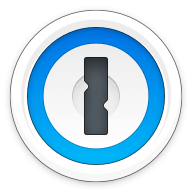Our bottom line: 1Password has the edge on platform compatibility, UX, form filling, and 2FA, but KeePass performs better on price and security.
1Password vs. KeePass Overview
1Password and KeePass are two of the top password managers on the market. These services are comparable in security, but depending on what features you want in a password manager, you’ll likely find one the clear choice.
KeePass is always free and provides most of the basic functionality you could want alongside top-notch security. However, 1Password’s user experience (UX), platform compatibility, form filling, and two-factor authentication (2FA) are nearly unparalleled when comparing features.
Which password manager should you get? Let this 1Password vs. KeePass face-off help you decide.
| Review factor | Winner |
|---|---|
| Price | KeePass (5.0) |
| Platform compatibility | 1Password (5.0) |
| User experience (UX) | 1Password (5.0) |
| Form filling | 1Password (5.0) |
| Security | KeePass (5.0) |
| Two-factor authentication (2FA) | 1Password (5.0) |
| Best overall | 1Password (4.8) |
1Password vs. KeePass: Specs
| Password manager | Details | Basic plan features |
|---|---|---|
| 1Password Overall rating: (4.8) Read our full 1Password review. | Starting price: $2.99 per month Platform compatibility: Android, iOS, Linux, Mac, Web (Brave, Chrome, Edge, Firefox, Safari), Windows Security: AES 256-bit encryption, 2FA |
|
| KeePass Overall rating: (3.6) Read our full KeePass review. | Starting price: Free Platform compatibility: Windows, Linux Security: AES 256-bit encryption, ChaCha20, Twofish, 2FA |
|
1Password vs. KeePass: Plans and Pricing
Price winner: KeePass | |
|---|---|
| 1Password (4.7) | $35.88 per year for Premium; $59.88 per year for Families; $239.40 per person per year for up to 10 users with Team; $95.88 per person per year for Business |
| KeePass (5.0) | Free |
You can’t beat KeePass’s always free plan. While other password managers offer limited versions of paid plans for free, this free plan is all KeePass offers. This means you get everything for $0 per month. That said, donations are accepted and encouraged to reward the developer for all the work that went into creating this free password manager.

1Password, on the other hand, is one of the few password managers with no free option beyond a 14-day trial of all its paid plans. This could turn some people off, but I encourage you to still give 1Password ample consideration because it’s got one of the best returns on investment I’ve seen.
1Password plans start at $2.99 per month for a single user or $4.99 per month for the Family plan. Teams and businesses will want to look into either the Team plan ($19.95 per person per month for up to 10 users) or the Business plan ($7.99 per person per month).
The Enterprise plan can be customized to your needs and price range. All of these plans offer essentially the same features with the exception of single sign-on (SSO) and reporting, which are only available with the higher-priced plans.
Winner: KeePass wins plans and pricing because it’s always free.
1Password vs. KeePass: Platform Compatibility
Platform compatibility winner: 1Password | |
|---|---|
| 1Password (5.0) | OS: Windows 10 or later, macOS 10.15 or later, iOS 15.5 or later, Android Pie or later, most recent Linux distributions Supported browsers: Chrome, Edge, Firefox, Safari, Brave |
| KeePass (3.0) | OS: Windows, Linux Supported browsers: Nothing official |
1Password offers one of the most diverse platform compatibilities of any password manager I’ve reviewed so far. With its recent update to include Linux support, there’s scarcely an operating system you can’t run 1Password on. While you will need the latest version of some of these operating systems, since most people are already doing this, it shouldn’t be a problem.
1Password is also compatible with most browsers, including Brave, Chrome, Edge, Firefox, and Safari.

Before you think too poorly of KeePass for its limited platform compatibility — it only runs on Windows and Linux — remember this is an always-free password manager. That said, its limited compatibility is one of its biggest drawbacks. If you’re a macOS, iOS, or Android user, you may find the lack of support too big of a drawback to make KeePass worthwhile, even at a price of $0.
KeePass is a non-commercial, open-source project — you’re not likely to get any additional releases for Windows or Linux, either. Still, since the program is open-source, other developers can expand on the work that’s already been laid out.
The developer, Dominik Reichl, even provides links to download other versions — including for Android, iOS, and macOS. However, these unofficial ports are even less likely to be faithfully updated than the Windows and Linux version, so take caution.

Winner: 1Password wins platform compatibility because it works with a wide range of operating systems and browsers.
1Password vs. KeePass: UX
UX winner: 1Password | |
|---|---|
| 1Password (5.0) | Web-like experience; macOS version is robust, but Windows is limited |
| KeePass (3.0) | Outdated look, but functional |
1Password offers one of my favorite UX/user interface (UI) designs of all password managers. I appreciate how uncluttered and user-friendly it is. There is no struggle to find what I’m after, be it on desktop or mobile. This is largely thanks to the limited features it offers, but in cases such as this, I find less is more.
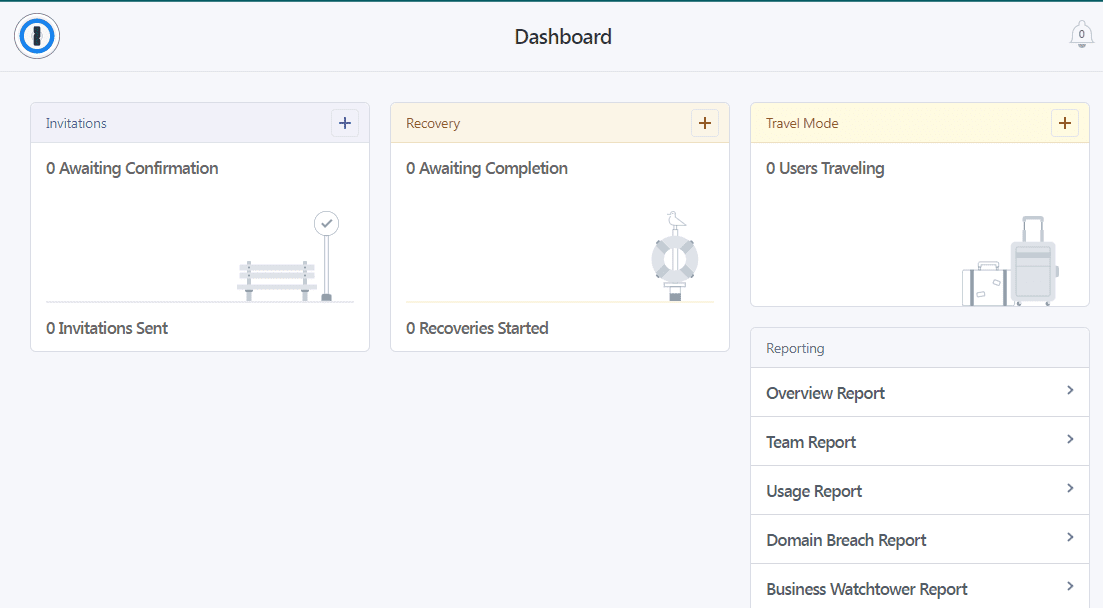
The Mac version offers the same fields viewed above but in a drop-down menu that installs directly into the Mac menu bar — another convenience I greatly appreciated.
KeePass, on the other hand, looks like it was designed to run on Windows XP and never got updated. While it is far from appealing to the eye, it does get the job done. The downside is that it may not be intuitive and offers little to no support in helping you navigate it. Once I got the hang of it, though, I found it as understandable as many other cheap password managers.
If you want to try KeePass, be prepared to spend time perusing the support section of the website since the program itself won’t walk you through how to use it.
Winner: 1Password wins UX because it offers a minimalist and appealing design that’s easy to navigate.
1Password vs. KeePass: Form Filling
Form filling winner: 1Password | |
|---|---|
| 1Password (5.0) | Easy to use and bypasses CAPTCHA |
| KeePass (3.0) | Not technically offered |
1Password’s form filling feature is everything you’d want and expect from auto-fill capabilities. It readily recognizes fillable fields, including log-in, address, and personal information, and even bypasses the CAPTCHA “verify you’re human” requirements. I couldn’t find anything to complain about, which is more than can be said for many other password managers I tested.
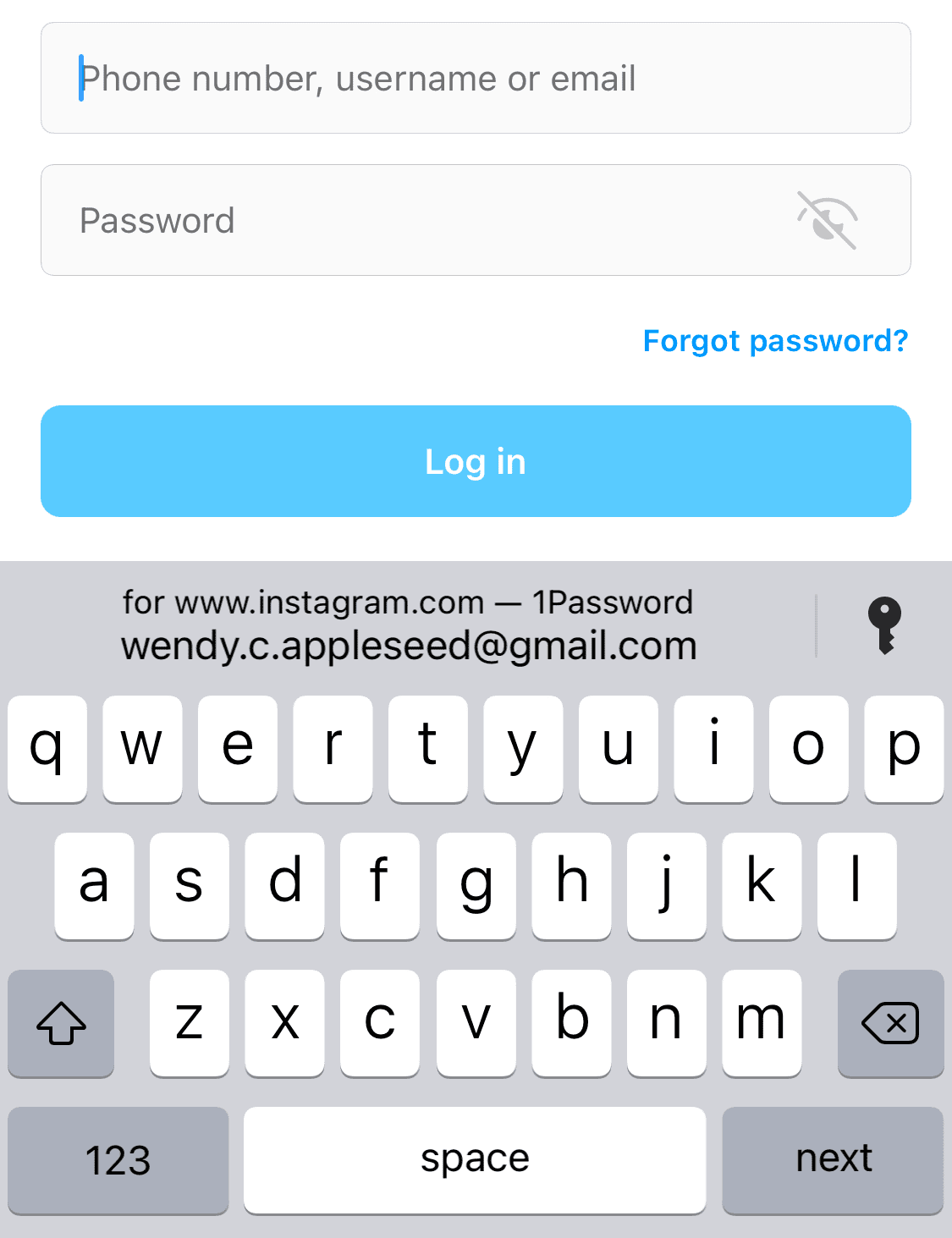
KeePass technically doesn’t even provide form-filling capabilities. However, there is an Auto Type tool that can do essentially the same thing and is arguably even more powerful.
While most password managers will prompt you when detecting a text field on a webpage, KeePass uses a preset keystroke you can type to trigger Auto Type when certain conditions are met. You can modify these keystrokes to whatever you choose and even trigger it to perform functions outside of web browsing.
The downside to this extra functionality is usability, however. You have to set up each site you want to use it on so it is triggered to log in automatically. It’s a tedious process, especially if you are non-techy, and requires some time watching tutorials. For this reason, I had to dock points on KeePass’s form filling.
Winner: 1Password wins form filling because its form filling is simple to use and reliable.
1Password vs. KeePass: Security
Security winner: KeePass | |
|---|---|
| 1Password (4.5) |
|
| KeePass (5.0) |
|
The industry standard for security among the best password managers is 256-bit AES encryption. Used by the U.S. government and military, this is widely considered unbreakable. Your data is as safe as it can get with any password manager using it. But KeePass doesn’t stop there.
In addition to 256-bit AES, KeePass uses 256-bit ChaCha20, which, while newer than AES, is considered by some to have a higher security margin than AES. KeePass also encrypts and stores data locally, either directly on your device or through a portable installation on a USB drive. To decrypt it, you use a master key set up the first time you run KeePass. The only way for someone to access your data is if they know that master key.
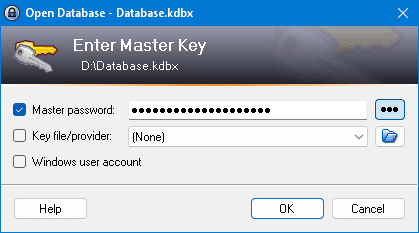
1Password also uses a 34-character long Secret Key alongside 256-bit AES encryption to protect your data. Once you log in with this Secret Key, it’s stored on all the applications and browsers on your device. To me, this calls the security of this key into question, as now it’s only as secure as the apps and browsers you’re using.
Winner: KeePass wins security because it combines top-of-the-line encryption with a master key to protect user data.
1Password vs. KeePass: 2FA
2FA winner: 1Password | |
|---|---|
| 1Password (5.0) |
|
| KeePass (3.0) |
|
1Password supports 2FA via authenticator apps (which use time-based one-time passwords, or TOTPs), security keys (small physical devices that authenticate you), and Duo (a third-party authentication service).
While any of these are adequate, I wish 1Password would include biometric authentication as an option. But seeing as this is rarely offered among even the best password managers, I’d rate 1Password’s 2FA as good as you’re likely to get from a password manager.
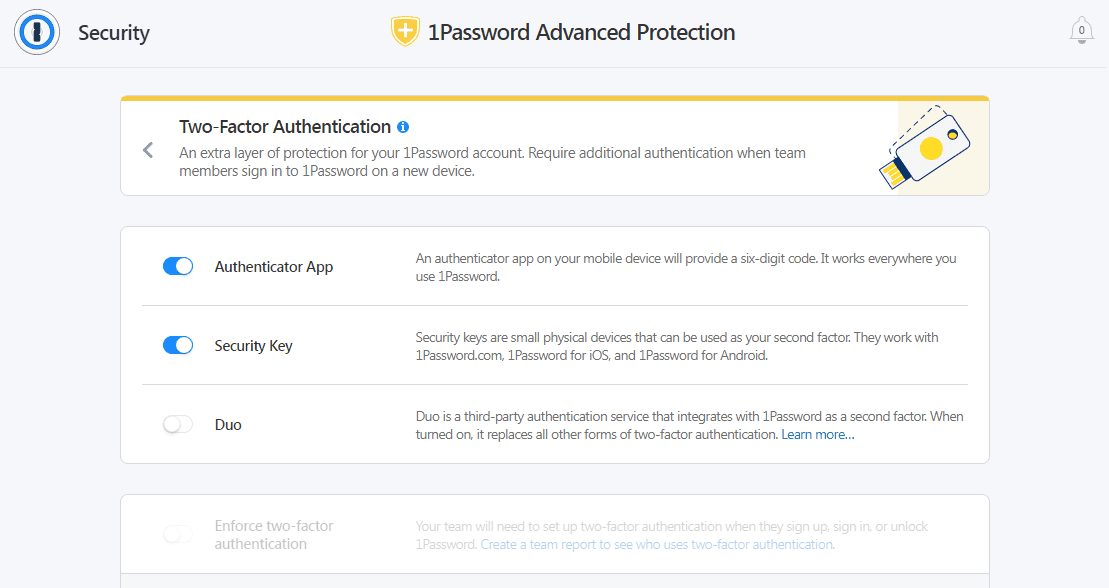
KeePass’s 2FA feature is clunky but functional. It calls this feature an OTP generator and sends you a text or email with a confirmation code you enter to continue logging in.
The process to set this up with KeePass is far from intuitive, but I have to give it points for including it as part of its free software.
Winner: 1Password wins 2FA because it has more authentication options and an easier setup.
Should You Get 1Password or KeePass?
Bottom line winner: 1Password | |
|---|---|
| 1Password (4.8) |
Best for: Families, small businesses, and mid-to enterprise-level businesses |
| KeePass (3.6) |
Best for: If you are willing to tinker or businesses with a dedicated IT professional |
KeePass’s main benefits are that it’s free and has some of the best security on the market. Since you’re likely looking for a password manager primarily to improve your cybersecurity, this may be all you need to hear to decide KeePass is your password manager.
If you want more bells and whistles and aren’t interested in climbing a steep learning curve full of tutorials and little to no IT support, then 1Password is a better choice. You get enough features to make it worth the minimal price, and won’t be disappointed in its appealing and easy-to-use interface.
I also appreciate how easy it is to sync between devices so that you can seamlessly manage passwords across your phone, browser, and laptop. It also enables easy password sharing across teams, a feature many enterprises and teams will appreciate. You can create multiple “vaults” or folders to manage passwords easily accessed without compromising security.
There’s a reason 1Password routinely tops best password manager rankings despite not offering an always-free plan: It’s a perfect example of getting what you pay for.
How I Evaluated 1Password vs. KeePass
On the surface, all password managers essentially generate and store passwords. As I evaluated providers, I dug deeper, comparing software on what matters most, including price, platform compatibility, security, and other factors.
I signed up for a plan with each provider to test:
- Plan value: Most password managers offer various subscription plans from free to around $20 per month. While free plans may be sufficient for some, those that need more functionality may prefer paid plans. We included a wide array of free and paid password managers to find the one that works best for you.
- Platform compatibility: You likely access your online accounts from multiple devices, including desktops, laptops, tablets, phones, as well as through different web browsers. Your password manager should be compatible with various devices, operating systems and browsers, and sync seamlessly between them all.
- UX: This is how you interface with all the features and functions of your new password manager — if it’s bad, you’ll be less likely to use the service. While this is a highly subjective category and some will disagree, it’s important to provide an overview based on my experience.
- Form filling: A password manager doesn’t have to include form-filling, but it’s somewhat standard and the ease with which it performs that function can be the deciding factor in which password manager you ultimately choose.
- Security: Since a password manager is first and foremost a security tool, it should come with all of the most up-to-date standard security features. This includes the highest level of available encryption (256-bit AES with PBKDF2-HMAC-SHA512); 2FA, such as biometric logins or MFA, and a password generator.
- Two-factor authentication (2FA): Used all over the internet to protect your accounts, this is quickly becoming a standard security practice. 2FA is a great way to secure more sensitive accounts to ensure they’re not breached.
Learn more about our review methodology.

About the Password Manager, Gunnar Kallstrom:
Kallstrom is a Cyber Team Lead for a Department of Defense (DOD) contracting company in Huntsville, Alabama, and has also worked as a computer network defense (CND) Cyber Analyst. An author and content creator for a cybersecurity academy, Kallstrom spent nearly 15 years in the Army as a musician before entering the cybersecurity field.
He holds a bachelor’s degree in music from Thomas Edison State University and a master’s in organizational development and leadership from the University of the Incarnate Word.
Kallstrom has completed several Computing Technology Industry Association (CompTIA) courses, including Security+, Network+, A+ Core 1, and A+ Core 2. He earned a CompTIA Security+ Certification. Additionally, he has completed the Cyber Warrior Academy program with more than 800 hours of hands-on, intensive, and lab-driven technical training in cybersecurity methods and procedures.
Passionate about all things cyber, Kallstrom was a speaker on a panel at the 2022 InfoSec World conference, giving a talk entitled “Hacking into a Cyber Career – True Stories.” Kallstrom is also a mentor to entry-level cybersecurity candidates seeking to break into the field. When he’s not working, he still enjoys playing guitar and fishing (not phishing).

